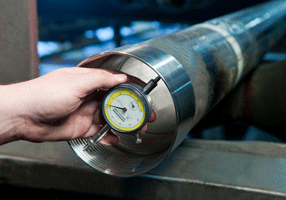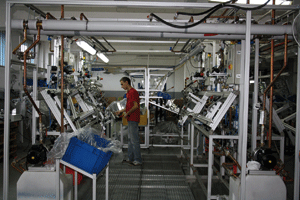Leuven, Belgium, October 10, 2023 – Welfare systems in Europe play a crucial role in mitigating the negative effects that robot adoption has on wages and employment, a new UNTANGLED study finds.
The rapid expansion of automation has raised concerns for workers' welfare, as robots are often implemented to improve efficiency and hence may replace humans. In the United States, the displacement of jobs due to automation has substantially reduced wages and employment, especially for those at the lower end of the wage scale.
But in a study of 14 European countries between 2006 and 2018, a period of intensive robot adoption in the European Union, researchers found that tax and benefit policies largely absorbed labour market shocks caused by automation.
“While the installation of industrial robots slightly decreased wages and reduced employment among the most exposed workers, the effect on household disposable income inequality was relatively small,” said Karina Doorley, a researcher at the Economic and Social Research Institute in Dublin, and a co-author of the paper. “Welfare and social benefits were a principal reason for this.”
The study shows that while inequality has widened in many countries in the last 15-20 years, it was not driven by robot adoption, but by other factors and policy choices that limited income redistribution.
Doorley and co-authors used data from several EU sources, including the EU Structure of Earnings Survey, the EU Labour Force Survey, and the EU Statistics on Income and Living Conditions to estimate the effects of robot penetration on wages and employment rates. Next, these estimates were used to calculate wages and employment rates that would have been recorded in 2018 if robot penetration remained at the 2006 level in each country. Finally, the resulting data was injected into EUROMOD, a tax-benefit microsimulation model, to assess the anticipated effects on household incomes.
The automation-driven increase in household income inequality was most pronounced in Eastern European countries that witnessed increases in robot penetration, such as Slovakia and Hungary. However, the magnitude was small – in all countries studied, it was below 1.5% of the 2018 value of the Gini index, much lower than the actual changes in Gini indices in most countries between 2006-2018.
Automation had a minor impact on household income inequality despite widening wage inequality and market income inequality to a larger extent. “In most countries, workers more exposed to robots tend to live with other household members with similar exposure. This pattern slightly amplified the automation shock at the household level, but the size of this effect was tiny, especially compared to the role of benefits,” the researchers wrote. They found that in general, benefit systems played a dominant role in cushioning market income losses, while taxes had a more muted role.
Past studies into the drivers of income inequality have focused on the role of tax-benefit systems and demographic change, but this is the first evaluation to isolate the effect of automation, the authors said.
There are some limitations to the findings. First, the simulations did not consider behavioural responses to automation. Second, changes in non-labour market incomes, fertility, or household structures were not included in the calculation.
Still, the findings paint a less gloomy picture of robots’ role in Europe’s economic development, the author said.
“Automation will affect the future of work, but robots explain only a minor share of changes in household income inequality in the countries that we studied,” said Piotr Lewandowski, a head of the Institute for Structural Research and co-author of the paper. “Tax-benefit systems were, and will continue to be, essential to mitigating the effects of automation shocks,” Lewandowski added.
Doorley, K., Gromadzki, J., Lewandowski, P., Tuda, D., and Van Kerm, P. (2023). Automation and Income Inequality in Europe (Deliverable 3.5). Leuven: UNTANGLED project 1001004776–H2020.
The paper is available here.



























